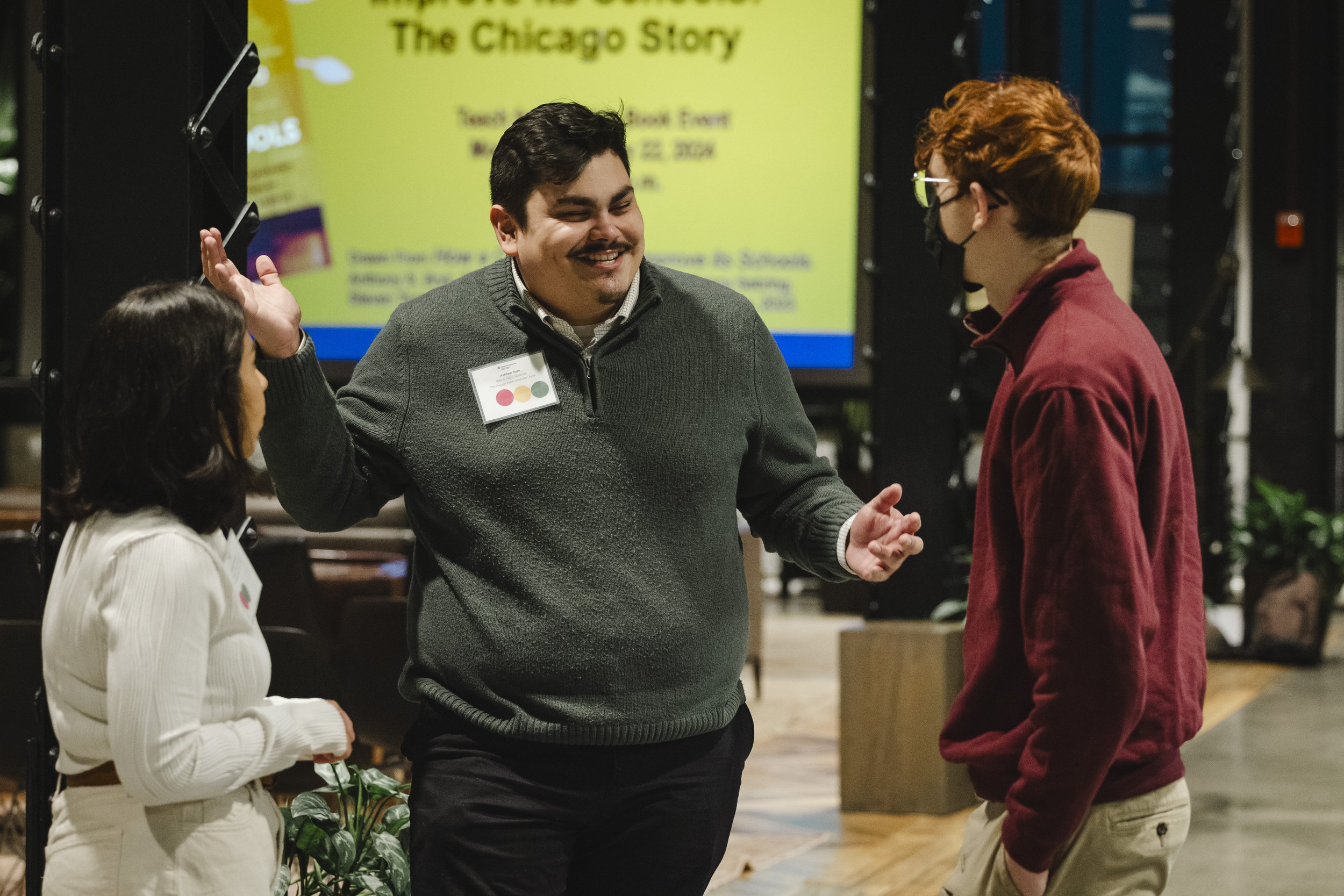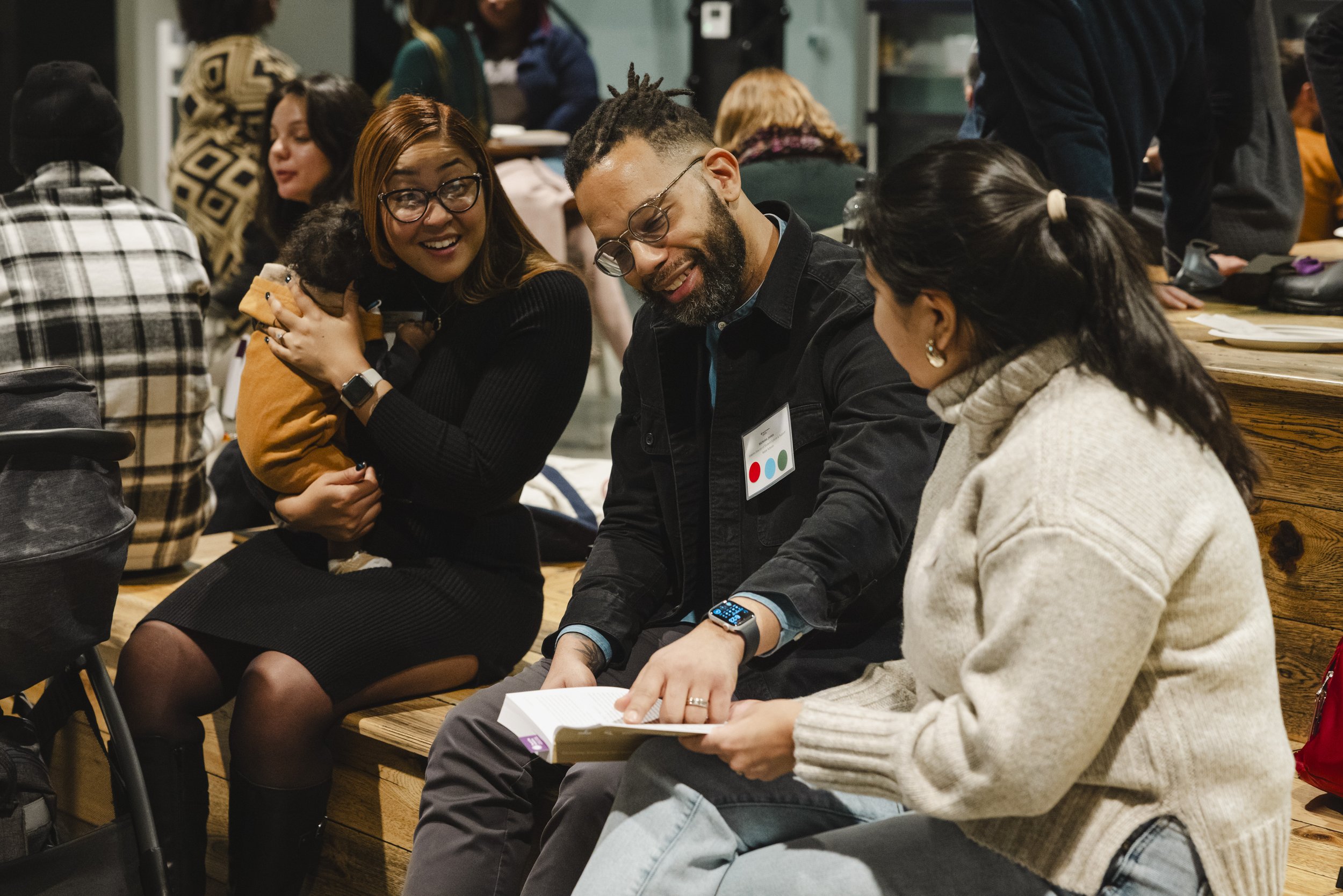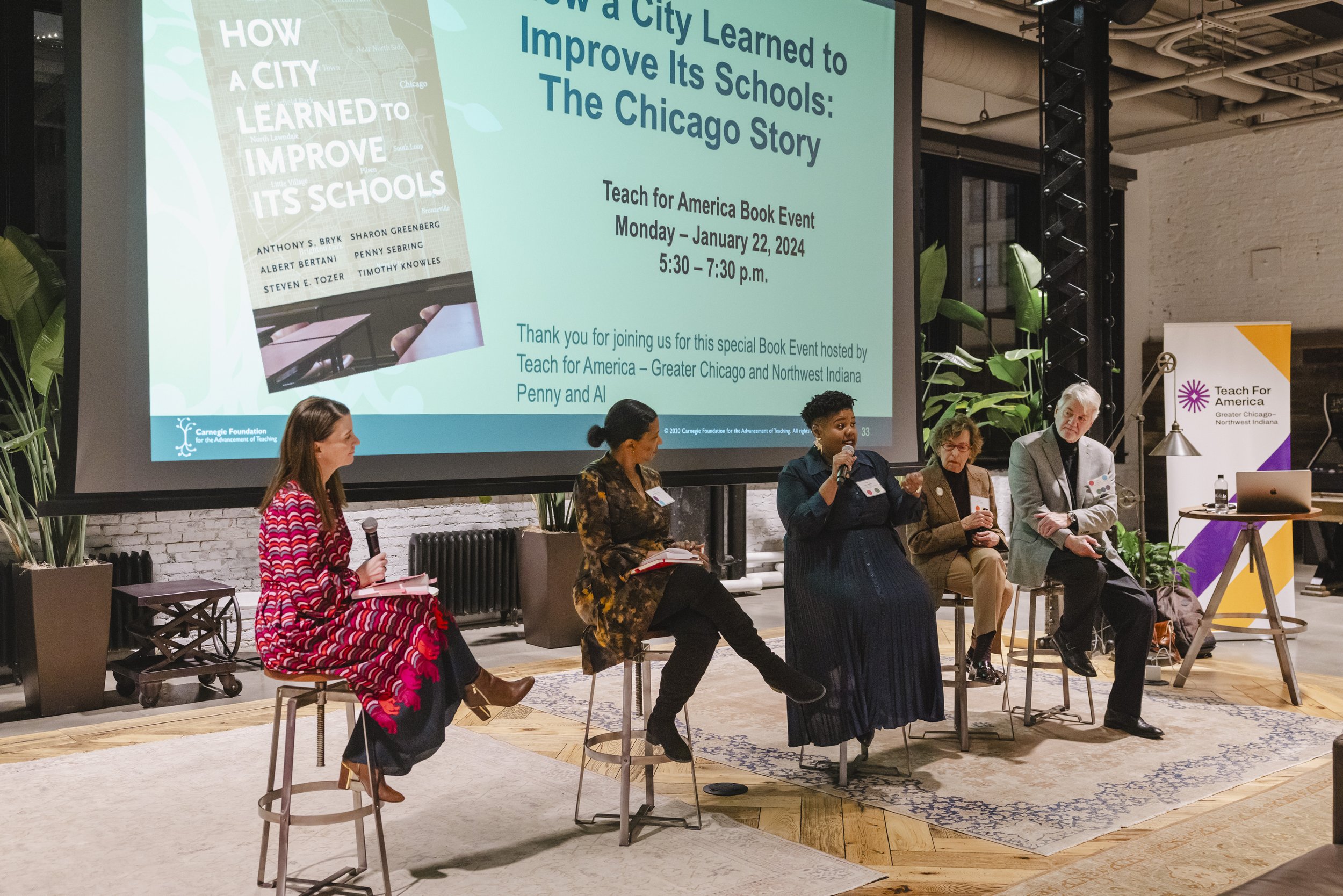Event: How a City Learned to Improve Its Schools
On January 22, 2024, nearly 100 people braved the ice and rain to attend How a City Learned to Improve Its Schools. TFA corps members, alumni, donors, partners, and community members gathered for a presentation and panel discussion about the book How a City Learned to Improve Its Schools, a comprehensive analysis of the astonishing changes that transformed the Chicago public school system from one of the worst in the nation to one of the fastest improving urban school districts. Every attendee received a copy of the book.
When guests arrived, they were asked to think about what role they play in the Chicago education landscape and choose a sticker for their name tag that coordinated with one or many of the eight different categories: CPS Central Office or Charter Network, Policy, University, Professional Development, Foundation, Teacher, or School Leader. Some people had one sticker, some had many. It gave people the opportunity to look around the room and think about all the different perspectives, pathways, and contributions that have been made to this system. Everyone in the room was a reflection, a living example, of the elegant complexity of the Chicago education exoskeleton.
Two of the co-authors of the book How a City Learned to Improve Its Schools, Penny Sebring, Co-Founder of the UChicago Consortium on School Research and Al Bertani, Senior Fellow at the Carnegie Foundation for the Advancement of Teaching gave a presentation that gave a panoramic view of the extraordinary 30-year school reform effort that changed the landscape of public education in Chicago. They noted that in the 1990’s, only about half of CPS ninth graders eventually graduated from high school and standardized test scores were in the upper 20th to low 30th percentile. CPS was clearly among the most troubled school system in America. But by 2017, Chicago stood as among the most improved public school systems in America. High school graduation rates began to improve post 2000 and rose over time to above 80 percent with the largest of these improvements have been made by Black and Latino males. They also shared an amazing new data point that was found after the completion of their book: that 2,000 more 2015 CPS high school graduates completed a degree or certificate than did 2007 high school graduates. And each year about 2,000 more CPS alumni are getting college degrees than in past years.
Following the presentation, Heather Anichini, President and CEO of The Fund, TFA alumna and board member, moderated a discussion about the role of strong organizational partnerships in driving progress with Anajah Philogene, Executive Director of TFA Greater Chicago–Northwest Indiana; Aimée Eubanks Davis, Founder and CEO of Braven; along with Al Bertani and Penny Sebring. Panelists shared their personal experiences in relation to a slice of book, mainly chapter three, about developing the educator workforce and the human capital that contributed to improvements in the system.
“All of the people sitting up here, from the time they were students to now, have been working to see how ideas across boundaries can work and you are going to write the next chapter.”
Toward the end of the discussion, Heather shared a passage from the book, “The chief actors of the exoskeleton were not just involved in passive debates about what other people should do. Rather, they were attempting to actually make their ideas work.” And she added that “All of the people sitting up here, from the time they were students to now, have been working to see how ideas across boundaries can work and you are going to write the next chapter.” She ended with a question to the audience: What measurable progress do you hope to see in the next 10 years for our kids in Chicago and what role will you play in that progress? The audience scanned a QR code on their phone to answer the question and watch the monitors as everyone’s answers populated onscreen. The evening provided an incredible opportunity to reflect on the progress made and the progress yet to be made by everyone in the room.







